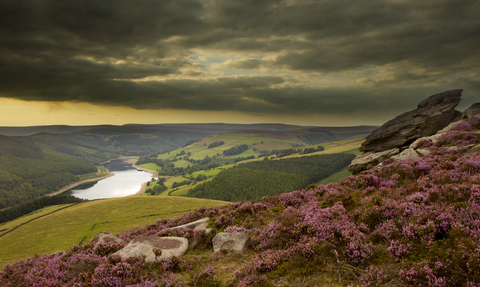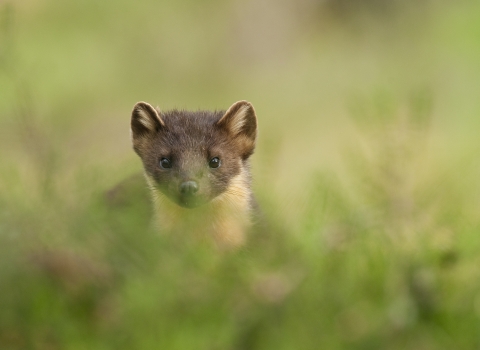
(c) 2020 Vision
Defining Rewilding
Rewilding has a Spectrum
As defined by Rewilding Britain, “rewilding is the large-scale restoration of ecosystems to the point where nature is allowed to take care of itself. Rewilding seeks to reinstate natural processes and, where appropriate, missing species – allowing them to shape the landscape and the habitats within.”
Rewilding means different things to different people. To some rewilding involves the largescale management of landscapes that are grazed by large herbivores like Bison and Buffalo, and apex predators like wolf, bear and wildcat manage the numbers of these naturally. For others, rewilding may be making a difference for wildlife by planting their small concrete garden or windowsill with flowers that benefit pollinators. All of these approaches fall within the rewilding spectrum - taking a poorly managed piece of land, regardless of size and type, and making it better for wildlife.
At Wild Peak we understand ‘rewilding’ to be a broad spectrum, from the small-scale actions taken in our back gardens or community spaces, to the large-scale restoration of our uplands - making space for nature at all scales is how we will allow nature to recover.
This big picture approach to conservation allows nature to take the lead and restore the wider natural processes that support life (e.g. grazing, flooding, natural regeneration). Rewilding does not seek to replace existing conservation work, but complement it, through connecting and expanding our existing reserves and safe havens for wildlife.
Rewilding doesn’t mean removing people from nature, infact it’s the opposite. Rewilding seeks to connect people with nature, it encourages us to appreciate nature and find the right balance between ours and nature’s needs, so to allow both to thrive!
What are the benefits of this approach?
1. Reducing carbon emissions and carbon sequestration
Rewilding has the potential to play a critical role in the fight against climate change by providing natural solutions to key climate related issues. By restoring and preserving key natural features such as native woodlands, heathland, wetlands and peatland and modifying how we use the land currently, we can make huge steps in both carbon sequestration and reduction of emissions. Rewilding Britain estimate that natural climate solutions such as rewilding could provide over a third of the greenhouse mitigation required by 2030 and thus call on the UK to make greater commitments to assisting natural recovery.
2. Reversing biodiversity decline
Rewilding can play a huge role in reducing current biodiversity declines. By restoring ecosystems at a landscape scale, reintroducing missing keystone species including native predators and restoring habitat connectivity, rewilding can create new opportunities for declining species to thrive. We can reverse these declines and save species, but only if we act now.
3. Supporting local economies
Rewilding seeks to identify solutions which allow nature to flourish alongside humans. A ‘wilder’ landscape will result in an increase in nature based enterprises, diversifying income of rural towns and villages. It will allow local and wider communities to thrive through the creation of new socio-economic opportunities that enrich nature through coordinated local action.
4. Improving health and wellbeing
It is now widely accepted that spending time in nature can be hugely beneficial to human wellbeing. Countless studies demonstrate that allowing people to reconnect with nature provides invaluable benefits to both physical and mental health. Nature provides us with fresh water, clear air, food pollination and protection from natural hazards such as flooding. It is essential to human survival and quality of life and thus it is critical that we protect and restore nature at all levels.



